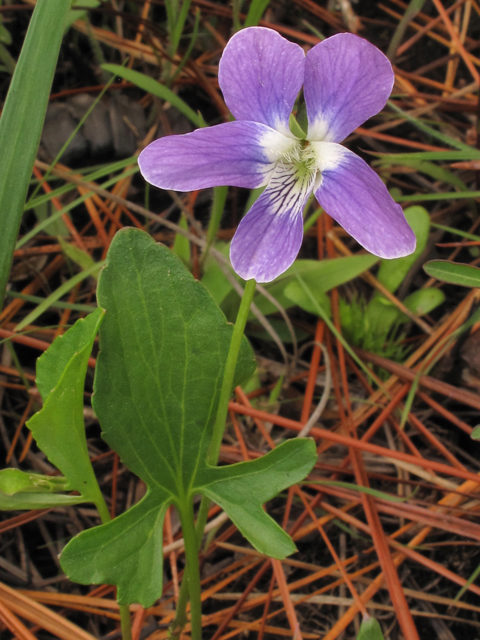Difference between revisions of "Viola septemloba"
(→Taxonomic Notes) |
Juliec4335 (talk | contribs) |
||
| Line 34: | Line 34: | ||
<!--===Use by animals===--> <!--Herbivory, granivory, insect hosting, etc.--> | <!--===Use by animals===--> <!--Herbivory, granivory, insect hosting, etc.--> | ||
<!--==Diseases and parasites==--> | <!--==Diseases and parasites==--> | ||
| + | |||
| + | ''Viola septemloba'' is an indicator species for the Panhandle Silty Longleaf Woodlands community type as described in Carr et al. (2010).<ref>Carr, S.C., K.M. Robertson, and R.K. Peet. 2010. A vegetation classification of fire-dependent pinelands of Florida. Castanea 75:153-189.</ref> | ||
==Conservation and Management== | ==Conservation and Management== | ||
Revision as of 17:03, 21 July 2020
| Viola septemloba | |
|---|---|

| |
| Photo by Alan Cressler hosted at Wildflowers.org | |
| Scientific classification | |
| Kingdom: | Plantae |
| Division: | Magnoliophyta - Flowering plants |
| Class: | Magnoliopsida - Dicots |
| Order: | Violales |
| Family: | Violaceae |
| Genus: | Viola |
| Species: | v. septemloba |
| Binomial name | |
| Viola septemloba Leconte | |

| |
| Natural range of Viola septemloba from USDA NRCS Plants Database. | |
Contents
Taxonomic Notes
Synonyms: Viola palmata var. palmata; Viola palmata; Viola septemloba ssp. septemloba
Varieties: none
Description
Distribution
Ecology
Habitat
Viola septemloba is an indicator species for the Panhandle Silty Longleaf Woodlands community type as described in Carr et al. (2010).[1]
Conservation and Management
Cultivation and restoration
Photo Gallery
References and notes
- ↑ Carr, S.C., K.M. Robertson, and R.K. Peet. 2010. A vegetation classification of fire-dependent pinelands of Florida. Castanea 75:153-189.